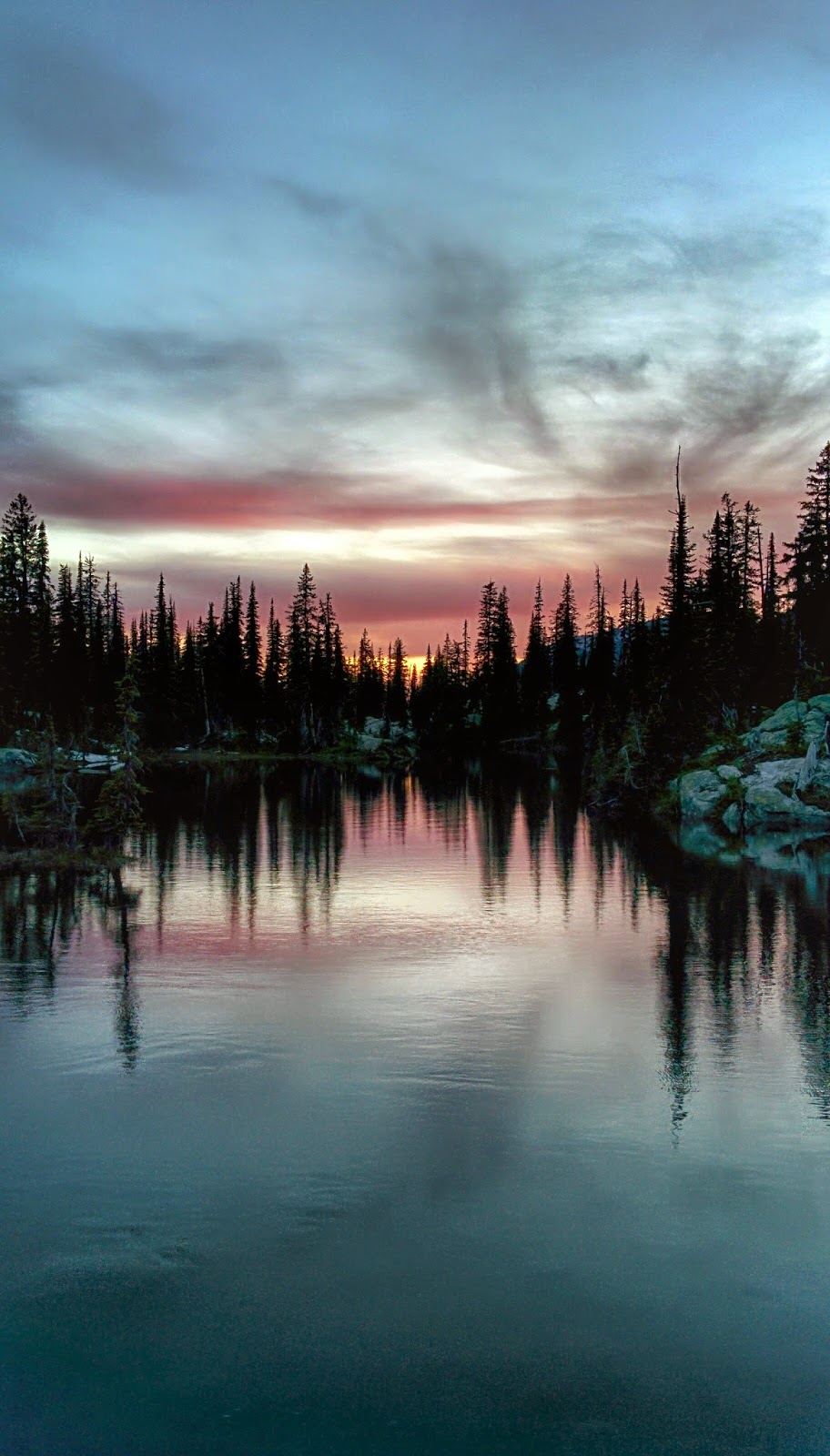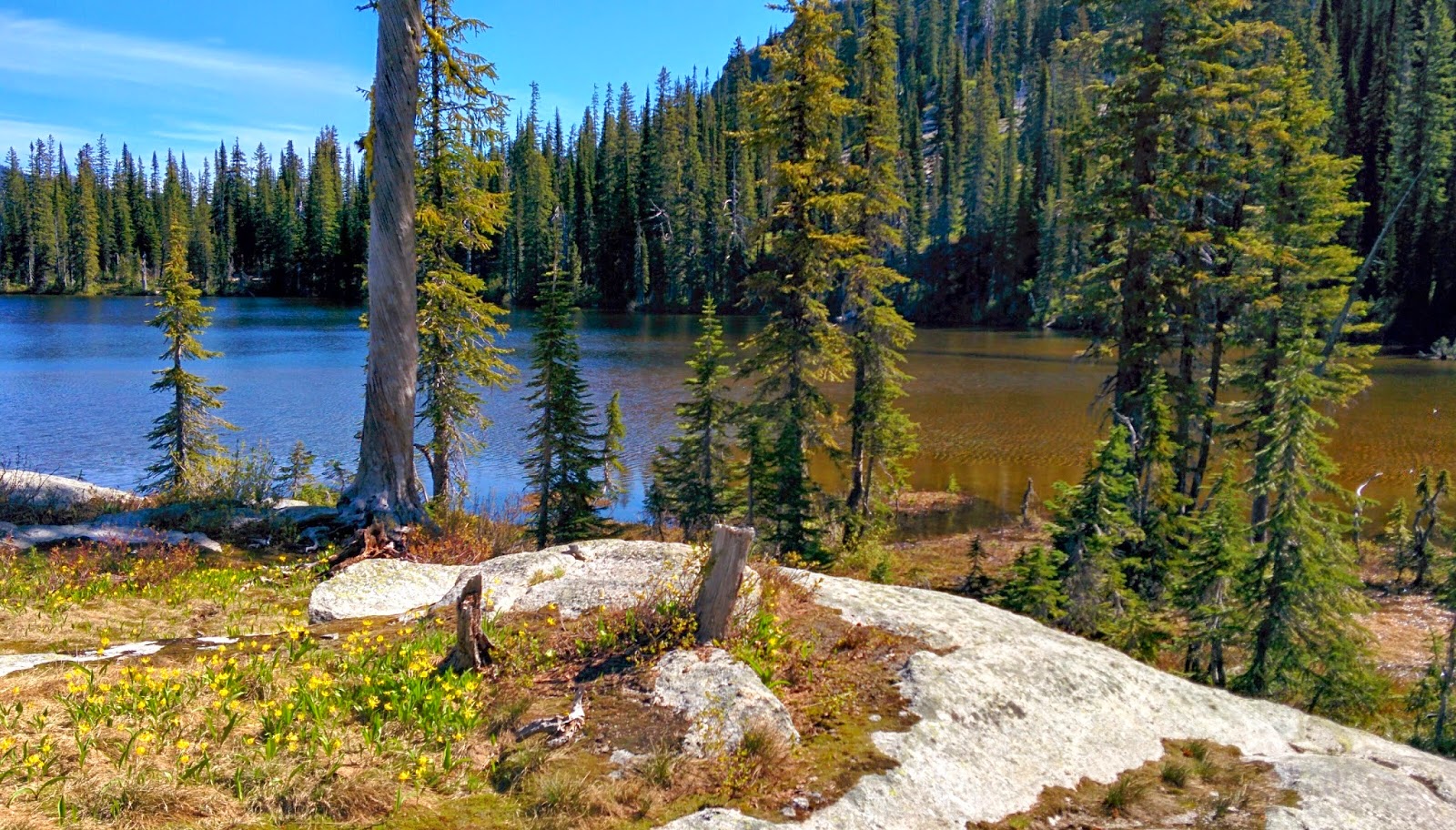 |
| Elevation Profile |
Sorry this is a short post, but I've had a very busy week due to busy days and various camps. Although my usual 3-day weekend was cut short due to a work camp, I still managed to get out and spend Saturday night at Fault Lake. This beautiful lake sits at 5,980 feet in the Sandpoint Ranger District of the Idaho Selkirks. Gaining around 2,900 feet of elevation over 5.8 miles, the trail climbs from the Pack River into a subalpine wonderland that holds the lake in a large granite cirque below Hunt Peak.
 |
| A peek at higher elevations |
 |
| Getting closer to the high-country |
Halfway up the rough road that leads to the trailhead, I was stopped by wash-out ruts half the size of my little car. So, I parked on the side there and began the extra 0.8 mile road walk to the trailhead. When I got to the trailhead, I was not thrilled to see 6 vehicles parked there! Not the night of solitude I had in mind. A half-hour into the hike, I ran into a group of 10 high-school aged friends slowly on their way up the trail. They let me pass and I hiked on not knowing much about the lake and how it would accommodate so many people. I also noticed fresh tracks along the trail from a visibly large group of horses. All of this left me second guessing my plan, but I was already in to it and not turning back.
 |
| Really opens up around mile 4-5 |
 |
| Fault Lake from the south |
Near the 5 mile mark, I ran into a group of 3 camped out in a meadow below the lake. They told me the group of horse riders were only up for a dayhike and that there was plenty of space at the lake. The lake was spectacular and I quickly found a campsite on a ledge above the rocky shore. I proceeded to explore the ridgeline to the south of the lake and caught a glimpse of McCormick Lake on the other side. By the time I got back down, the 10 person crew had shown up and the horse-riders were leaving.
 |
| McCormick Lake |
 |
| Fault Lake |
 |
| Campfire on my ledge |
 |
| Full moon rising |
I was very worried at first when the large group made a lot of noise while swimming and throwing rocks in the lake. However, as the sun began to dip down, the group retreated to ridgeline I had explored earlier and although I could see the light of their fire, I could not hear them and therefore had a very peaceful time. Just like clockwork, as the sun dipped down in the west, the full moon came up in the east. Very few clouds loomed in the sky, providing a great view of the moon and stars.
 |
| Sunset to the east |
 |
| Fault Lake |
 |
| Fault Lake |
 |
| An unnamed pond |
 |
| Fault Lake from the north |
The next morning, I woke up early and explored the ridge to the north of the lake. A short scramble to the top provided great views of Gunsight Peak and Fault Lake from a different angle. After that, I packed up and hiked out.
 |
| The outlet falls below the lake |
 |
| Fault Lake |









































